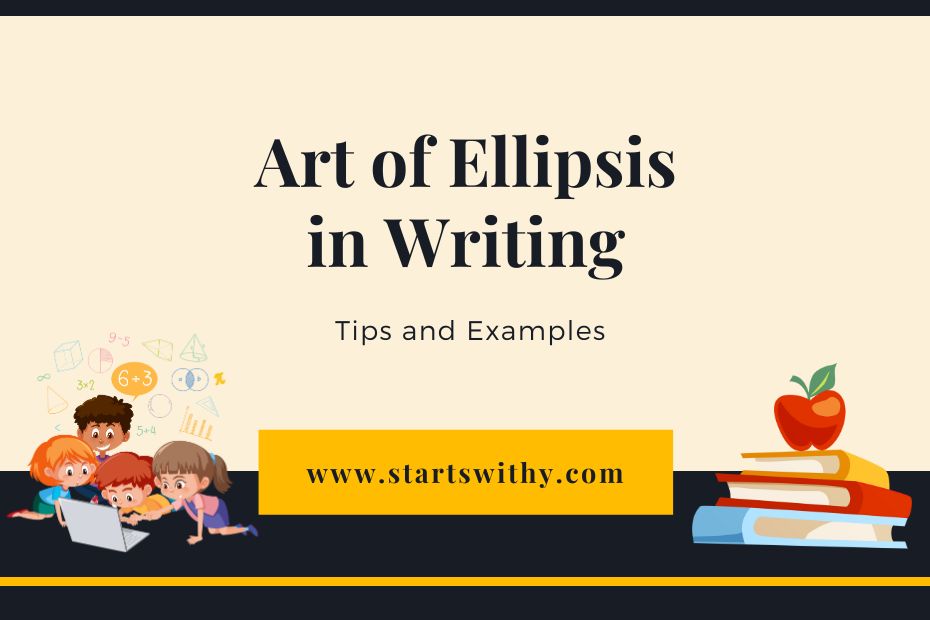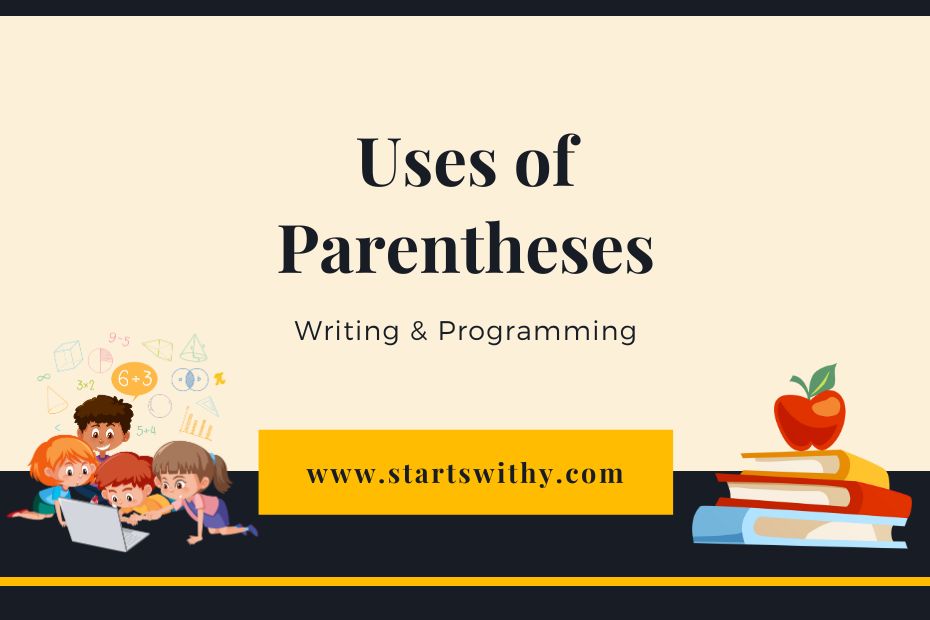Do you ever find yourself at a loss for words? When you can’t quite express your thoughts or feelings, the ellipsis comes to the rescue. Those three little dots have the power to convey hesitation, create dramatic pauses, and even indicate a sentence trailing off. In this article, I’ll delve into the fascinating world of ellipsis in writing and explore its various uses in both formal and informal contexts.
In formal writing, the ellipsis is primarily employed to indicate omissions, often in quotations. However, in informal and fiction writing, it takes on a whole new dimension. It becomes a tool to express uncertainty, to signify a character’s hesitation, or to create a sense of anticipation. The ellipsis can add depth and nuance to your writing, allowing you to convey emotions and thoughts that words alone may struggle to capture.
But the ellipsis doesn’t stop there. It also finds its place in the realm of formal writing. Even in more serious contexts, this versatile punctuation mark can still work its magic. From indicating pauses to emphasizing important points, the ellipsis has the potential to elevate your writing and make it more engaging. So, whether you’re crafting a formal essay or penning a fictional masterpiece, the ellipsis is a valuable tool that can help you navigate the intricacies of language and express yourself with finesse.
What is an ellipsis?
An ellipsis is a versatile punctuation mark that can add depth and nuance to your writing. It is a series of dots used to represent an omission of words, sentences, or even entire sections of text without affecting the meaning of the content. Casually referred to as the “dot-dot-dot,” an ellipsis can help you cut the fluff out of your writing and make it more succinct and impactful.
While the most common use of an ellipsis is in quotations to indicate omissions, it has many other uses in informal and fiction writing. For example, an ellipsis can be used to represent a mood shift, thoughts trailing off, hesitation, pause, or suspense. It allows you to convey uncertainty or create anticipation in your writing.
You might be wondering why there are differences in spacing between the dots in ellipses. Different writing style guides have different rules for ellipsis spacing. The Chicago Manual of Style, for instance, requires a space between each dot in the ellipsis. On the other hand, the AP Stylebook treats the ellipsis like a word in a sentence, so there is no space between the dots but a space before and after the ellipsis. MLA Style calls for a space before each period and a space following the last period in an ellipsis.
To give you an example, let’s take the sentence: “I’m John. Mr. Doe was my father.” If you want to connect the two sentences with an ellipsis, the correct format would be a period followed by an ellipsis. It would look like this: “I’m John… Mr. Doe was my father.” This usage indicates a pause or a trailing off of thought.
An ellipsis is a powerful tool that can enhance your writing. It allows you to convey emotions, thoughts, and pauses effectively. By using ellipses strategically, you can engage your readers and make your writing more captivating. So, the next time you want to add depth and finesse to your writing, consider using an ellipsis.
When to use an ellipsis
Indicating Omitted Words
An ellipsis is a versatile punctuation mark that can be used to represent the omission of words, sentences, or even entire sections of text without altering the meaning of the content. One of the most common uses of an ellipsis is in quoting, where it is used to indicate the omission of certain words or phrases from the original source. By using an ellipsis, we can condense lengthy quotes or remove unnecessary information while still maintaining the essence of the original statement.
For example, in a formal academic writing situation, if I were to quote a passage and omit certain words, I could use an ellipsis to show that there has been an omission without changing the overall message of the quote.
“In the sentence above, the ellipsis shows that certain words in my not-so-humble opinion have been omitted. However, the overall message of the quote remains the same.”
In this case, the ellipsis allows me to indicate that certain words were omitted while preserving the integrity of the quote itself.
Creating Suspense or Trailing Off
Another use of an ellipsis in writing is to create suspense, convey uncertainty, or represent thoughts that trail off. This is particularly common in fiction writing, where authors utilize ellipses to add a sense of hesitation or ambiguity to their characters’ dialogue or inner monologue.
For instance, imagine a scene in a novel where a character is describing someone’s peculiar behavior:
“It almost looked like…no, surely it couldn’t be. They peered out of the dark window and saw…no one at all.”
In this example, the ellipses serve to delay the revelation of certain information, heightening the suspense for the reader. By trailing off the dialogue, the ellipses add to the sense of uncertainty and intrigue.
However, it’s important to note that while ellipses can be a powerful tool in conveying mood and atmosphere, they should be used sparingly. Too many ellipses can dilute their dramatic effect and make the text difficult to read. It’s crucial to strike a balance and use ellipses intentionally to enhance the storytelling or convey a specific emotion or thought.
An ellipsis can be used to indicate omitted words in a quote or to create suspense, hesitation, or trailing thoughts in fiction writing. By understanding these different uses, writers can harness the power of the ellipsis to enhance their writing and engage their readers. So, keep in mind the versatility of this punctuation mark and use it thoughtfully to convey your desired message.
How to use an ellipsis correctly
Using three dots
When it comes to using an ellipsis correctly, it’s important to remember that an ellipsis should consist of three dots: “…” This trio of dots is used to represent an omission of words, phrases, or even whole sentences without altering the meaning of the content.
For example:
- “I had a feeling that something was off…”
- “The answer to that question is…”
- “He whispered, ‘I love you…'”
By using these three dots, you can effectively create a sense of suspense, hesitation, or trailing thoughts in your writing. It’s a subtle yet powerful punctuation mark that adds depth and emotion to your sentences.
Avoiding overuse
While an ellipsis can enhance your writing, it’s crucial to avoid overusing it. Using too many ellipses can make your writing appear sloppy, dramatic, or even silly. Remember, moderation is key.
Here are a few guidelines to keep in mind:
- Use ellipses sparingly: Reserve them for moments that truly require a pause or omission in your writing.
- Stick to formal guidelines: In formal writing, ellipses are typically used to show omitted words in quotations. It’s recommended to follow the guidelines set by academic style manuals in these situations.
- Be conscious of context: Consider the tone and purpose of your writing. While ellipses work well in informal or fictional writing to create mood shifts or thoughts trailing off, they might not be appropriate for more formal or professional contexts. Always think about the impact it will have on your overall message.
Remember, as writers, it’s important to use ellipses effectively and purposefully. By following these guidelines, you can harness the power of the ellipsis to elevate your writing and convey emotions, thoughts, and pauses in a meaningful way.
Common mistakes to avoid when using an ellipsis
Using more or fewer dots than necessary
When it comes to using an ellipsis, consistency is key. An ellipsis should always consist of three dots, with no additional dots or spaces added. Using more or fewer dots can change the meaning or tone of your writing. It’s important to follow the standard convention of three dots to ensure clarity and readability for your readers.
Placing a space before or after the ellipsis
Another common mistake to avoid is placing a space before or after the ellipsis. According to style guides like The Chicago Manual of Style, there should be no spaces before or after the ellipsis. However, some style guides, such as APA style, allow for spaces between each dot. To maintain consistency, it’s best to choose a style guide and stick to its guidelines consistently throughout your writing.
Using an ellipsis at the beginning or end of a sentence
One important rule to remember is to never place an ellipsis at the beginning or end of a sentence. An ellipsis should only be used within a sentence to indicate the omission of words, phrases, or sentences. Placing an ellipsis at the beginning or end of a sentence can create confusion and disrupt the flow of your writing. It’s best to use the ellipsis purposefully and sparingly within the body of your sentences.
By avoiding these common mistakes when using an ellipsis, you can ensure that your writing remains clear, concise, and effective. Remember to use three dots consistently, avoid spaces before or after the ellipsis, and use the ellipsis within the body of sentences rather than at the beginning or end. These guidelines will help you use the ellipsis correctly and enhance the impact of your writing.
Examples of using an ellipsis in writing
In this section, I’ll provide you with some examples of how to effectively use an ellipsis in writing. From formal to informal, these examples will showcase the versatility and impact of this punctuation mark.
- Formal Writing:
- The law said that no person can release a wild animal in a crowded supermarket…
- Abraham Lincoln once said, “Four score and seven years ago our fathers brought forth a new nation dedicated to the proposition that all men are created equal…”
These examples demonstrate the use of an ellipsis to indicate an omission of words, maintaining the grammatical integrity of the sentence while providing a concise and impactful message.
- Informal or Fiction Writing:
- I was…we were…they didn’t… Look, it’s complicated, okay…
- I would never betray a friend for a crate of puppies. A crate of puppies and kittens, though…
In these informal or fiction writing examples, the ellipsis is used to convey pauses, hesitations, or a trailing off of thoughts. It adds a sense of authenticity and allows for more natural dialogue.
It is crucial to remember that an ellipsis should always be used in a way that is appropriate for the context and style of your writing. Whether you’re crafting a formal document or a fictional story, mastering the use of ellipses can significantly enhance the impact and readability of your work.
Stay tuned for the following sections, where I’ll delve deeper into the various instances that call for an ellipsis in writing, including its accepted use in formal writing and additional uses in informal and fiction writing.
Conclusion
In this article, I have discussed the common mistakes to avoid when using an ellipsis in writing. By emphasizing the importance of consistency and avoiding unnecessary spaces or additional dots, writers can ensure that their use of ellipses is clear and effective. It is crucial to remember that placing an ellipsis at the beginning or end of a sentence can cause confusion and disrupt the flow of writing.
I have also provided examples of how to use an ellipsis effectively in both formal and informal writing, highlighting its versatility and impact. Whether it’s creating suspense in a novel or indicating a pause in a conversation, the ellipsis can be a powerful tool in conveying meaning.
To conclude, it is essential to use ellipses appropriately for the context and style of writing. By following these guidelines, writers can enhance their communication and create engaging and cohesive written pieces. So, next time you find yourself reaching for those three dots, remember to use them wisely and with purpose.




